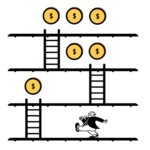UX Design – the Art of the Obvious

UX Design deals with the creation of products providing meaningful and relevant experiences to the users. It talks about designing the entire process by considering stakeholders at each and every step including the aspects of branding, design, usability and function. UX design is a key ingredient of any design which forms the foundation of user centric Design.
Good designs are always intuitive and obvious which can be accomplished by applying the principles of UX Design. An obvious and intuitive design is easily understandable and it communicates its message effectively.
The user can achieve his goal using an obvious and intuitive design without conscious thinking. Obviousness does not have any standard definition and various designers have worked to create a clear pathway to understand the term “obvious”. Designers often debate whether obviousness is a characteristic of the interaction process between a specific user and the design or obviousness is a part of design. Hence the very first step to make any design obvious is to consider “who is going to use the product?”This approach of beginning any design with the user and keeping him at the centre is what makes a product obvious, intuitive and ultimately user centric. By thoroughly identifying the characteristics likely to be present in the final design as per the user and literature study, demographics and market trend, etc., an obvious design can be created which can be accepted by the user without any hesitation and it will lead to intuitive usage of the design.
When an interdisciplinary group creates the experience by considering other domain principles then it makes users feel that a design is obvious and centred around him. Therefore the designs provide relevant and meaningful experiences and seem obvious to the target audience but not to the general mass. Hence an obvious design is defined as the design which can be used intuitively upto a certain degree and it must be interactive with the user in an effective way without any prerequisite of conscious application of the knowledge.
UX Principles to create an obvious design
1. Research - Design is all about setting small milestones, create hypotheses and collect data. At every stage, the data must be collected to evaluate the progress of the design and corrective measures must be taken based on the results of qualitative and quantitative research.
2. Identify the need - Before creating any product, need must be identified. Building products without any need analysis leads to the failure of the product and loss to the organization. If your product is not fulfilling any need then such products are left unused. Every product starts with a need identification and every aspect of the product solves a particular problem. Primary and secondary study always help in finding out the hidden needs which marks the success of the design.
3. Make it simple - If your product is not understandable and it does not convey its usability and functionality easily then it is not simple enough. Try to build smarter products in a simple manner and it should make your user feel smarter by solving problems quickly and easily and do not make people think about obvious things.
4. Test early and often -
To ensure the product’s usability, test it as early as possible and as often as possible. While testing do not try to judge people because you are testing your design not them. Pay attention to them and observe them carefully. Sometimes designers think that their product is intuitive and obvious but you can’t ask people to use the way you have created it so get their feedback to improve your design.
Recent Posts

Gamification of User Interface
Gamification of User Interface “A game is a problem-solving activity, approached with a playful attitude.” - Jesse Schell Gamification is the application of game elements in a non-gaming environment with the intent to motivate users and enhance users’ participation to achieve the desired goal. Gamification is achieved by taking the user experience, emotions…

User Experience through User Interface
User Experience through User Interface User experience design has been the buzz word in the design and communications circle in the recent years. It has also gained acceptance as a practice, nowadays, across a number of interfaces such as websites, E-commerce platforms, project management systems and portals. The corporates are realizing the potential…

Design Research
Design Research “Good design doesn't stem from intuition, talent, or luck (although I'll take a smidgen of each). It comes from research and understanding”.- Author: Anonymous Research is considered to be the foundation and one of the key steps in the design process. It consumes a significant amount of time to clarify the task…

UX Design deals with the creation of products providing meaningful and relevant experiences to the users. It talks about designing the entire process by considering stakeholders at each and every step including the aspects of branding, design, usability and function. UX design is a key ingredient of any design which forms the foundation of user centric Design.
Good designs are always intuitive and obvious which can be accomplished by applying the principles of UX Design. An obvious and intuitive design is easily understandable and it communicates its message effectively.
The user can achieve his goal using an obvious and intuitive design without conscious thinking. Obviousness does not have any standard definition and various designers have worked to create a clear pathway to understand the term “obvious”. Designers often debate whether obviousness is a characteristic of the interaction process between a specific user and the design or obviousness is a part of design. Hence the very first step to make any design obvious is to consider “who is going to use the product?”This approach of beginning any design with the user and keeping him at the centre is what makes a product obvious, intuitive and ultimately user centric. By thoroughly identifying the characteristics likely to be present in the final design as per the user and literature study, demographics and market trend, etc., an obvious design can be created which can be accepted by the user without any hesitation and it will lead to intuitive usage of the design.
When an interdisciplinary group creates the experience by considering other domain principles then it makes users feel that a design is obvious and centred around him. Therefore the designs provide relevant and meaningful experiences and seem obvious to the target audience but not to the general mass. Hence an obvious design is defined as the design which can be used intuitively upto a certain degree and it must be interactive with the user in an effective way without any prerequisite of conscious application of the knowledge.
UX Principles to create an obvious design
1. Research - Design is all about setting small milestones, create hypotheses and collect data. At every stage, the data must be collected to evaluate the progress of the design and corrective measures must be taken based on the results of qualitative and quantitative research.
2. Identify the need - Before creating any product, need must be identified. Building products without any need analysis leads to the failure of the product and loss to the organization. If your product is not fulfilling any need then such products are left unused. Every product starts with a need identification and every aspect of the product solves a particular problem. Primary and secondary study always help in finding out the hidden needs which marks the success of the design.
3. Make it simple - If your product is not understandable and it does not convey its usability and functionality easily then it is not simple enough. Try to build smarter products in a simple manner and it should make your user feel smarter by solving problems quickly and easily and do not make people think about obvious things.
4. Test early and often -
To ensure the product’s usability, test it as early as possible and as often as possible. While testing do not try to judge people because you are testing your design not them. Pay attention to them and observe them carefully. Sometimes designers think that their product is intuitive and obvious but you can’t ask people to use the way you have created it so get their feedback to improve your design.
Recent Posts

Gamification of User Interface
Gamification of User Interface “A game is a problem-solving activity, approached with a playful attitude.” - Jesse Schell Gamification is the application of game elements in a non-gaming environment with the intent to motivate users and enhance users’ participation to achieve the desired goal. Gamification is achieved by taking the user experience, emotions…

User Experience through User Interface
User Experience through User Interface User experience design has been the buzz word in the design and communications circle in the recent years. It has also gained acceptance as a practice, nowadays, across a number of interfaces such as websites, E-commerce platforms, project management systems and portals. The corporates are realizing the potential…

Design Research
Design Research “Good design doesn't stem from intuition, talent, or luck (although I'll take a smidgen of each). It comes from research and understanding”.- Author: Anonymous Research is considered to be the foundation and one of the key steps in the design process. It consumes a significant amount of time to clarify the task…
CONTACT US
Follow Us





